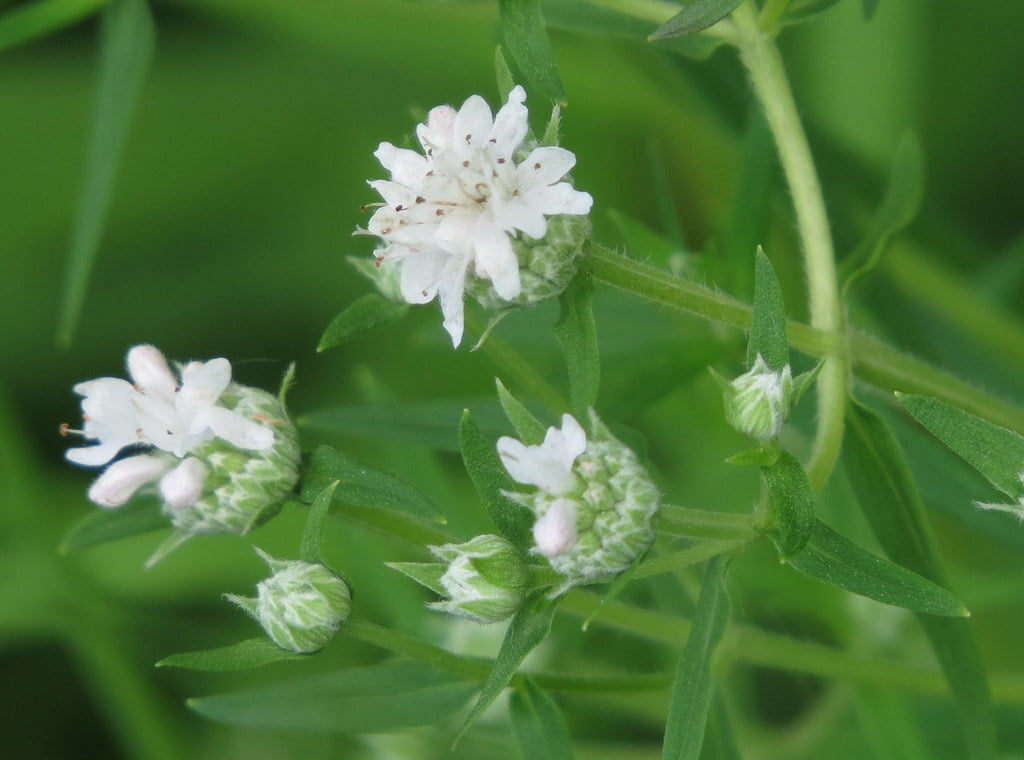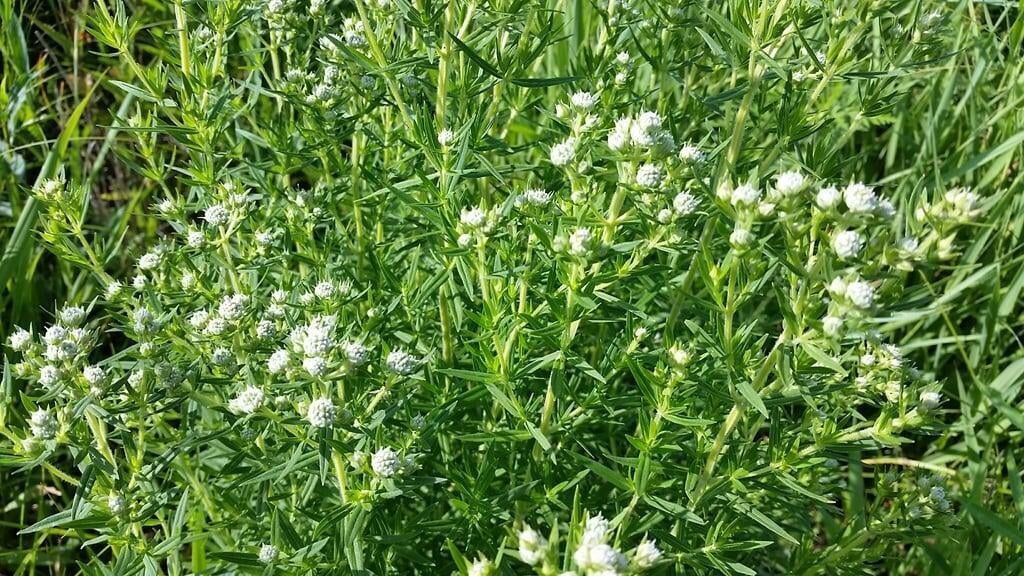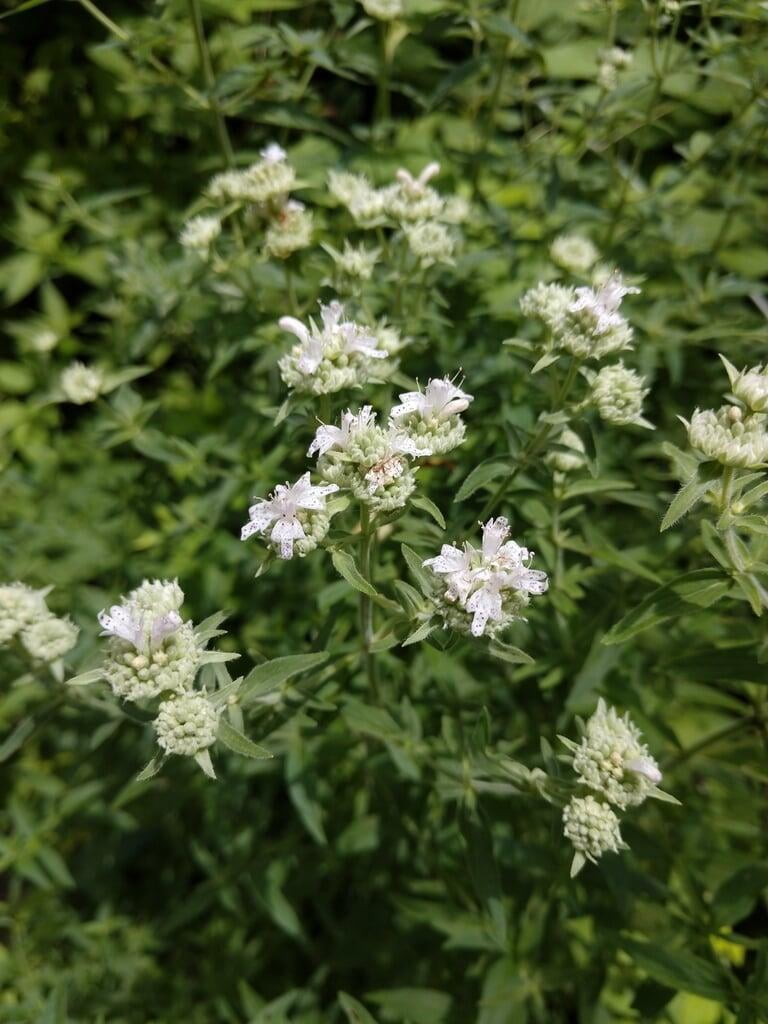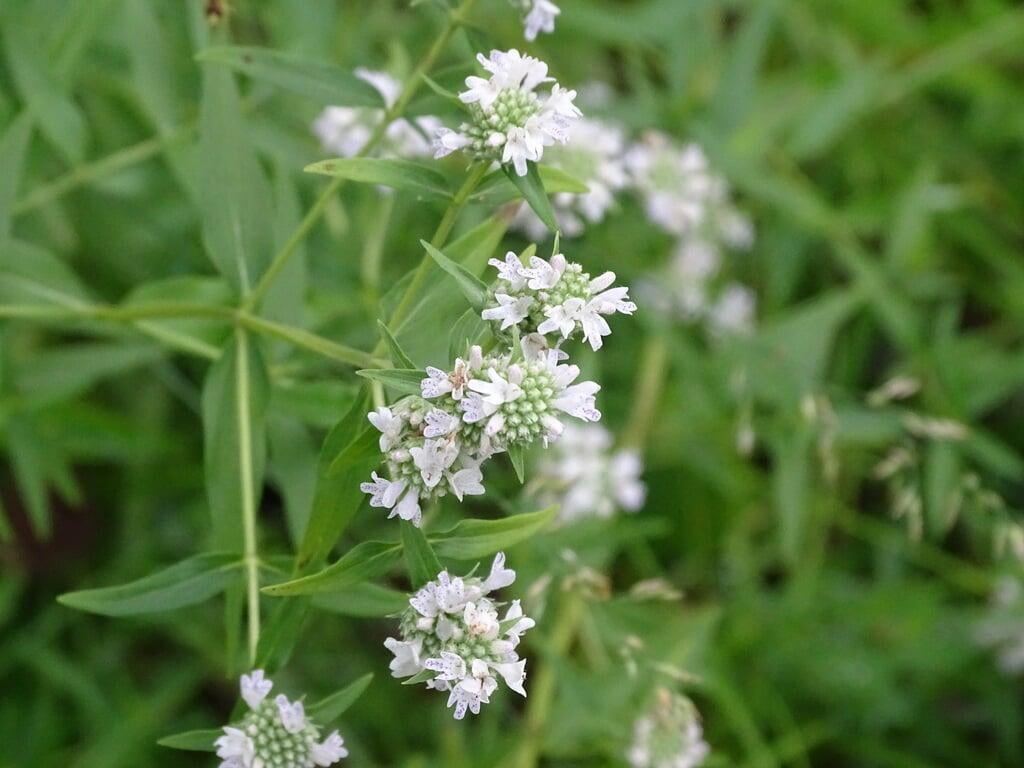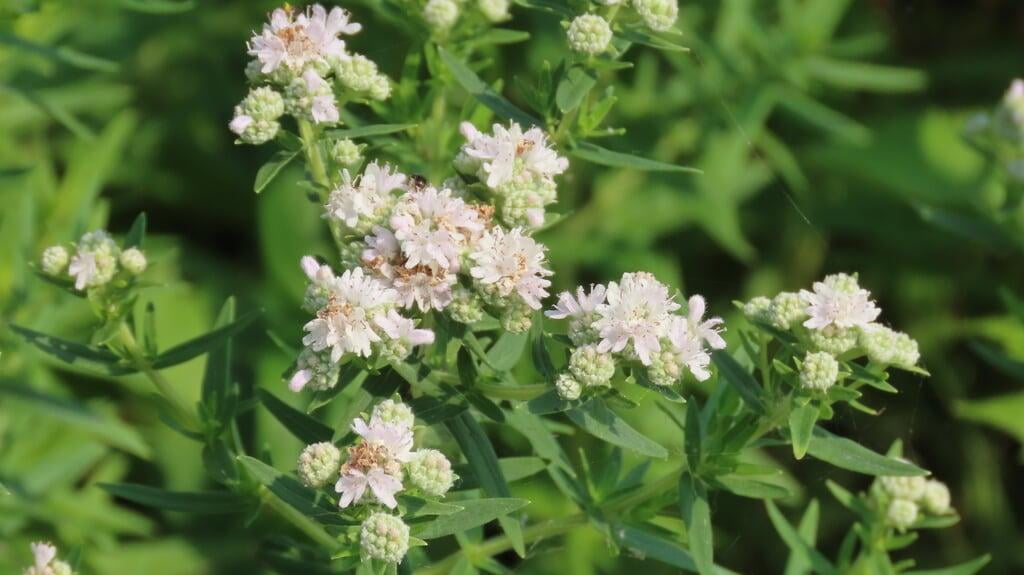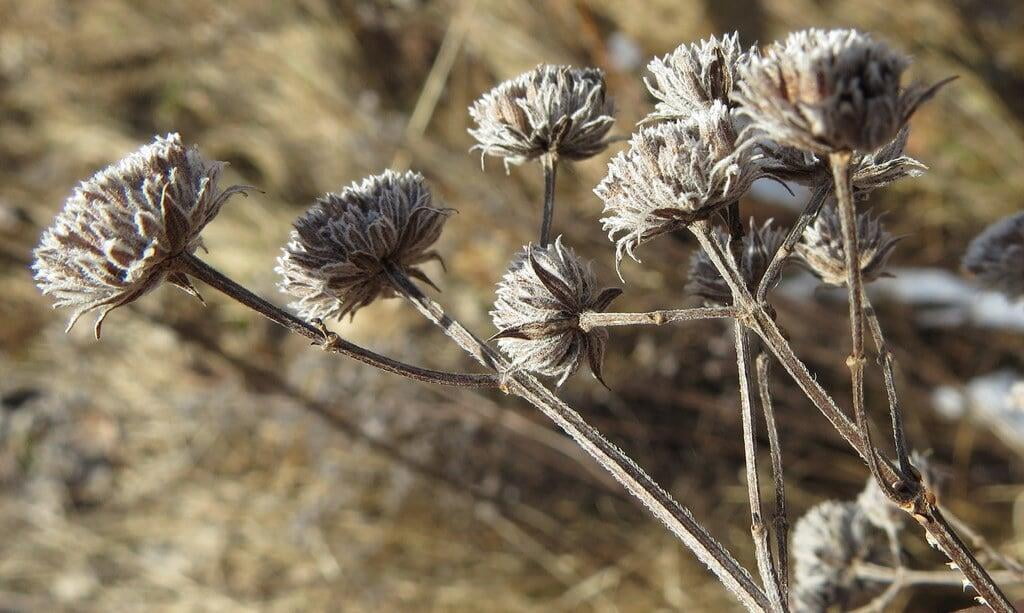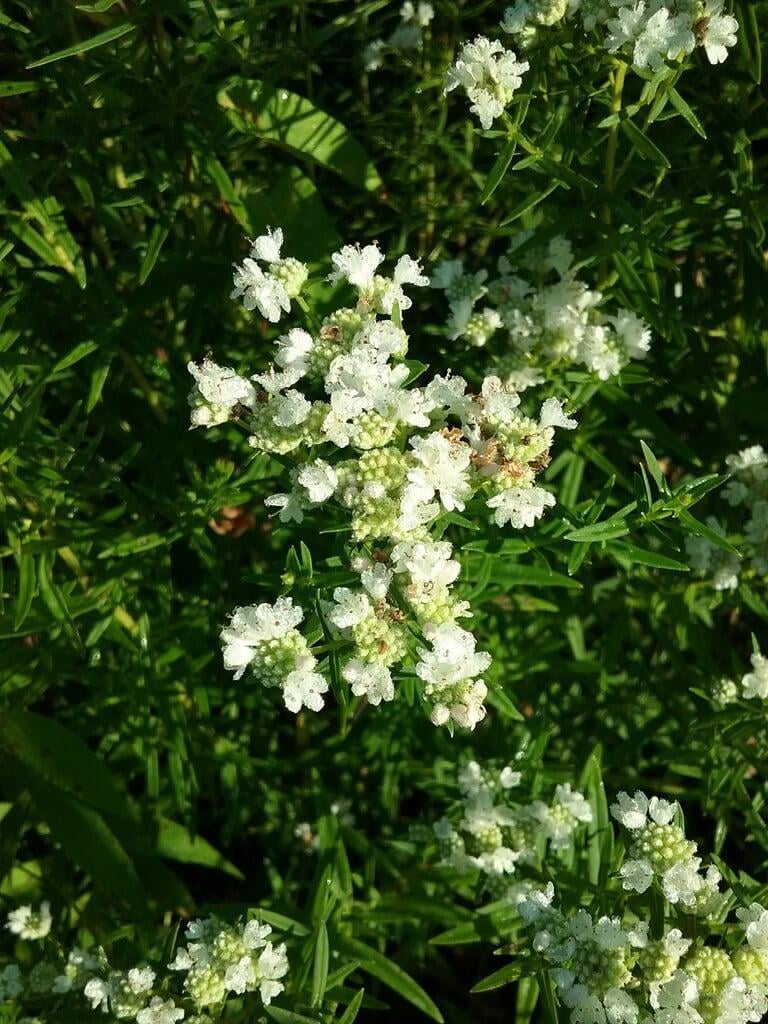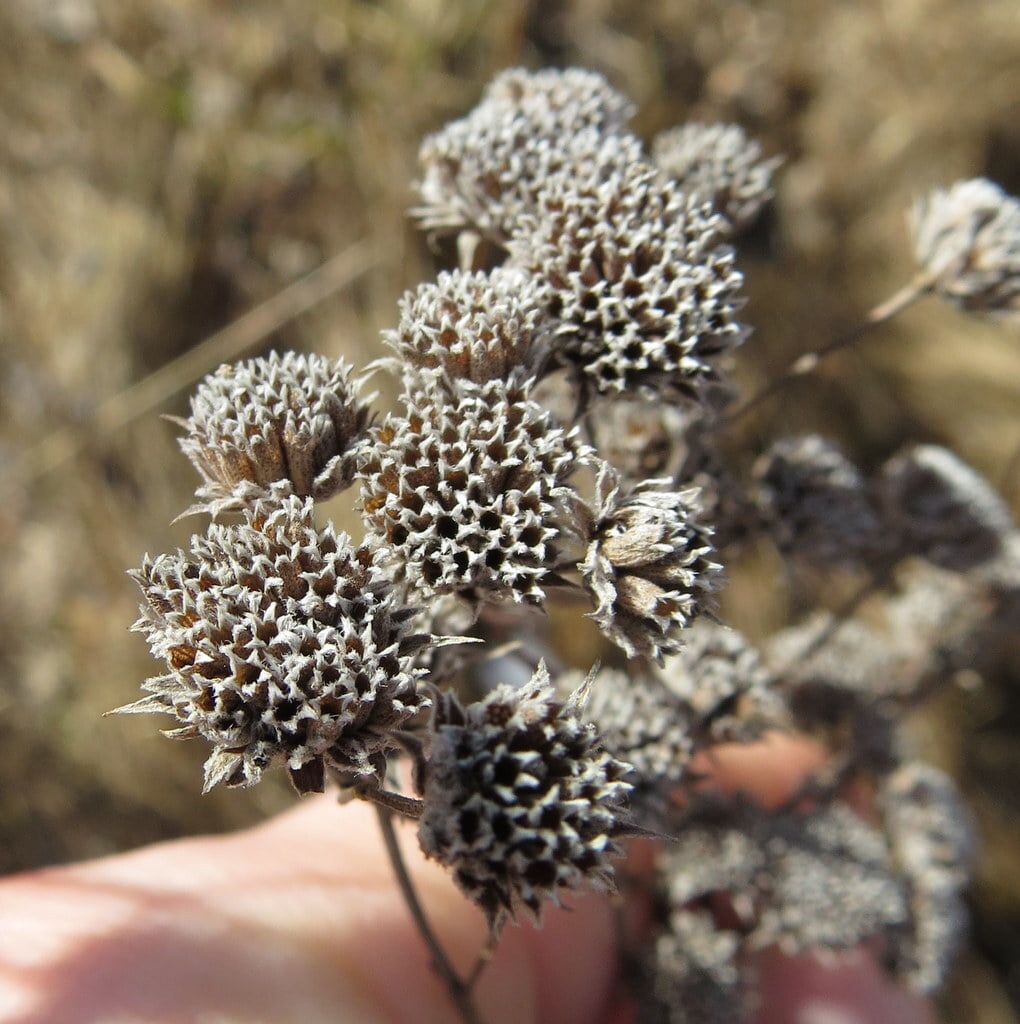Pycnanthemum virginianum
Mountain mint Description:
Pycnanthemum virginianum, also known as Mountain Mint, is an herbaceous perennial plant native to North America. It can be found growing in a variety of habitats, including meadows, prairies, and woodlands, and is often cultivated in gardens for its attractive foliage and fragrant flowers. The leaves of Pycnanthemum virginianum are lance-shaped and have a pleasant minty fragrance when crushed. The plant produces small, white to pink or purple flowers in dense clusters from summer to fall, attracting pollinators such as butterflies and bees.
In the wild, Pycnanthemum virginianum plays an important role in its ecosystem, providing habitat and food for pollinators and other wildlife. It is also a popular choice for landscaping and gardening, as it is easy to grow and maintain and adds beauty and fragrance to outdoor spaces. Whether used for its medicinal properties, its ornamental value, or its ecological benefits, Pycnanthemum virginianum is a valuable and versatile plant that deserves recognition and appreciation.
Native Range:
Mountain mint grows natively in the Midwestern and Eastern states. From as far west as Colorado to Maine and as far south as Georgia.
Standard Plant Information:
Plant Height: 1' - 3'
Bloom Time: July - September
Preferred Habitat: Does well in part shade to full sun. Often found in fields, prairies, thickets, and fens.
Sowing:
For most homeowners, the best option is to scatter seed on the ground by hand broadcasting at a minimum of 16-64 pls ounces per acre. For even coverage, we recommend that you broadcast seed in perpendicular rows across the site to ensure even coverage.
You’ll want to broadcast any grass seed first, which will get raked into the soil lightly. Next, it is ideal to mulch the area lightly with either a clean (no seed) straw or preferably with our native Little Bluestem straw, sold at our retail garden centers. After a light mulching is complete, now it’s time to broadcast your native wildflower seeds, which should not be raked into the soil. A good rain or watering is sufficient to cover the seed.
Planting:
Simply dig a hole in the soil slightly larger than the plant’s roots. Ensure that the soil line of the plant is maintained during the transfer (i.e. the plant should be at the same level with the ground as it was in the pot). Pack any loose dirt back around the plant and make sure you water it well the same day to ensure it has the best chance of survival.
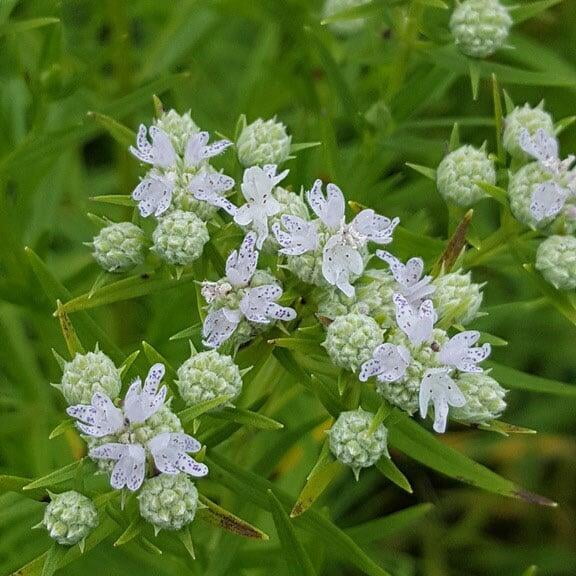
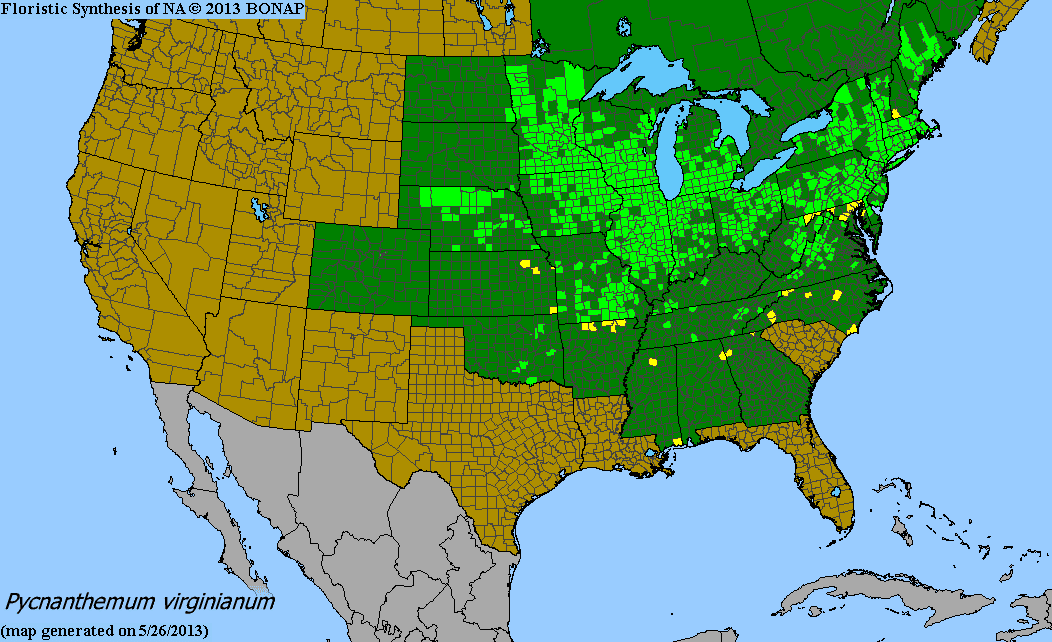
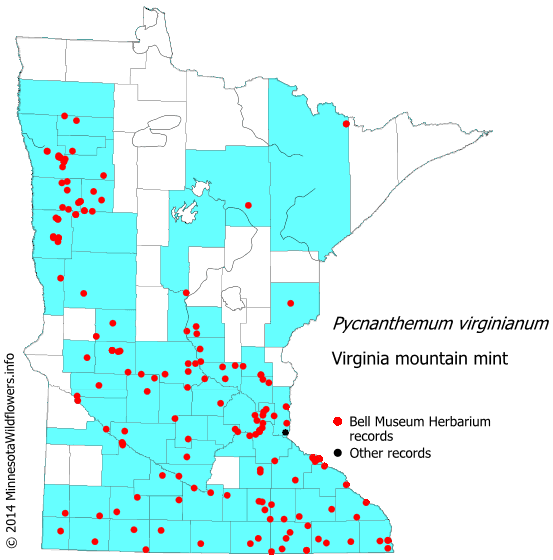
maps used with permission from MN Wildflowers
Pycnanthemum virginianum Gallery
Pycnanthemum virginianum Gallery
